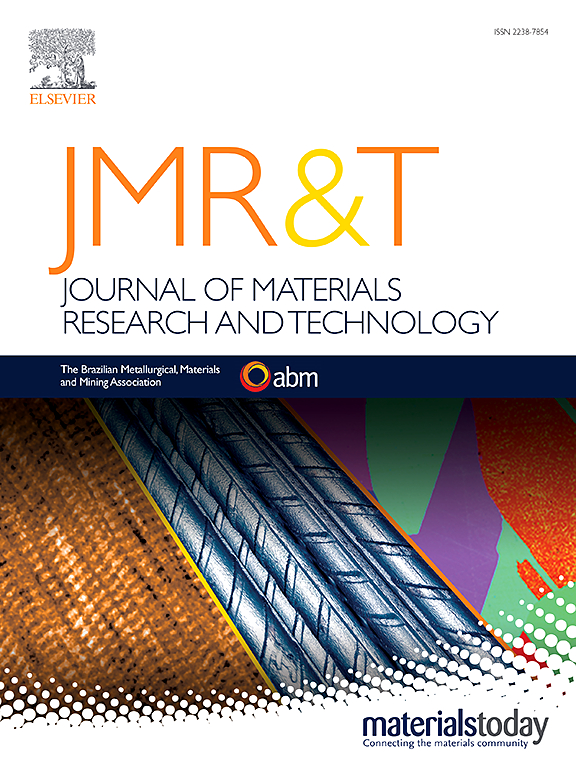淬火温度对Cu-Zr-Al玻璃带组织和性能的影响
IF 6.2
2区 材料科学
Q1 MATERIALS SCIENCE, MULTIDISCIPLINARY
Journal of Materials Research and Technology-Jmr&t
Pub Date : 2025-03-14
DOI:10.1016/j.jmrt.2025.03.114
引用次数: 0
摘要
由于玻璃结构继承自合金熔体,因此熔体在冷却过程中所经历的热历史对金属玻璃的结构和性能有重要影响。在这项工作中,系统地研究了熔体淬火温度对Cu-Zr-Al金属玻璃的原子结构、热物理性能和机械性能的影响,使用了最先进的技术,包括基于同步加速器的高能x射线衍射和基于芯片的闪光差示扫描量热法。研究发现,对于所研究的Cu-Zr-Al合金,制备完全无定形和无污染带的温度窗非常窄,仅跨越~ 150k。这个窗口的边界是不均匀成核,下限是未熔化的核,上限是剧烈的化学反应导致O含量显著增加。此外,Cu-Zr-Al合金的玻璃化转变、结晶、热稳定性和力学性能对熔体纺丝淬火前的熔体温度高度敏感。两个关键因素——无序化和均质化效应,以及O污染随淬火温度的升高而逐渐增强——决定了组织和性能的演变。这些发现为通过精心控制熔体热历史来定制玻璃结构和性能提供了有价值的见解。本文章由计算机程序翻译,如有差异,请以英文原文为准。
Effect of quenching temperature on the structure and properties of Cu-Zr-Al glassy ribbons
Since the glass structure is inherited from the alloy melt, the thermal history experienced by the melt during cooling significantly influences the structure and properties of metallic glasses. In this work, the effect of melt quenching temperature on the atomic structure, thermophysical properties, and mechanical properties of a Cu-Zr-Al metallic glass is systematically investigated, using a combination of state-of-the-art techniques, including synchrotron-based high-energy X-ray diffraction and chip-based flash differential scanning calorimetry. It is found that for the studied Cu-Zr-Al alloy, the temperature window for preparing completely amorphous and contamination-free ribbons is remarkably narrow, spanning merely ∼150 K. This window is bounded by heterogeneous nucleation due to the unmelted nuclei at the lower limit and significantly increased O content due to severe chemical reactions at the higher limit. Furthermore, the glass transition, crystallization, thermal stability, and mechanical properties of the Cu-Zr-Al alloy are found to be highly sensitive to the melt temperature prior to quenching during melt-spinning. Two key factors—the disordering and homogenization effects—as well as the progressive enhancement of O contamination with increasing quenching temperature—are revealed to govern the structural and property evolutions. These findings provide valuable insights into tailoring glass structures and properties through the deliberate control of melt thermal history.
求助全文
通过发布文献求助,成功后即可免费获取论文全文。
去求助
来源期刊

Journal of Materials Research and Technology-Jmr&t
Materials Science-Metals and Alloys
CiteScore
8.80
自引率
9.40%
发文量
1877
审稿时长
35 days
期刊介绍:
The Journal of Materials Research and Technology is a publication of ABM - Brazilian Metallurgical, Materials and Mining Association - and publishes four issues per year also with a free version online (www.jmrt.com.br). The journal provides an international medium for the publication of theoretical and experimental studies related to Metallurgy, Materials and Minerals research and technology. Appropriate submissions to the Journal of Materials Research and Technology should include scientific and/or engineering factors which affect processes and products in the Metallurgy, Materials and Mining areas.
 求助内容:
求助内容: 应助结果提醒方式:
应助结果提醒方式:


